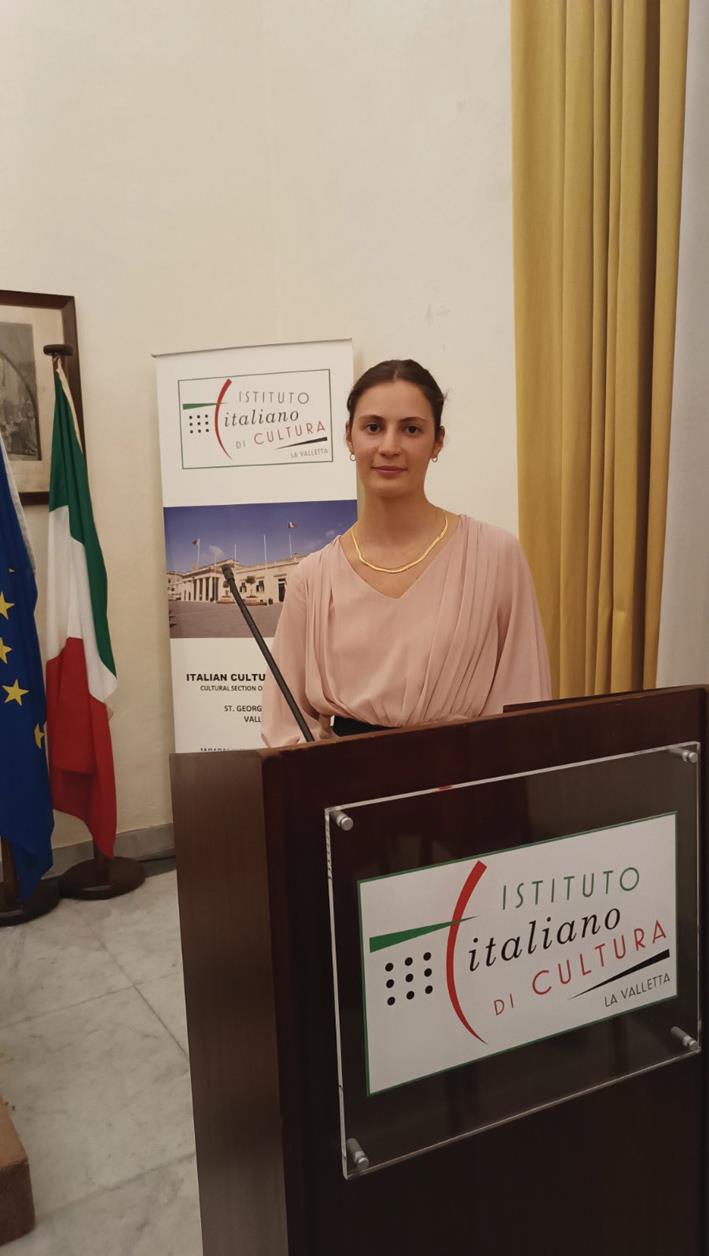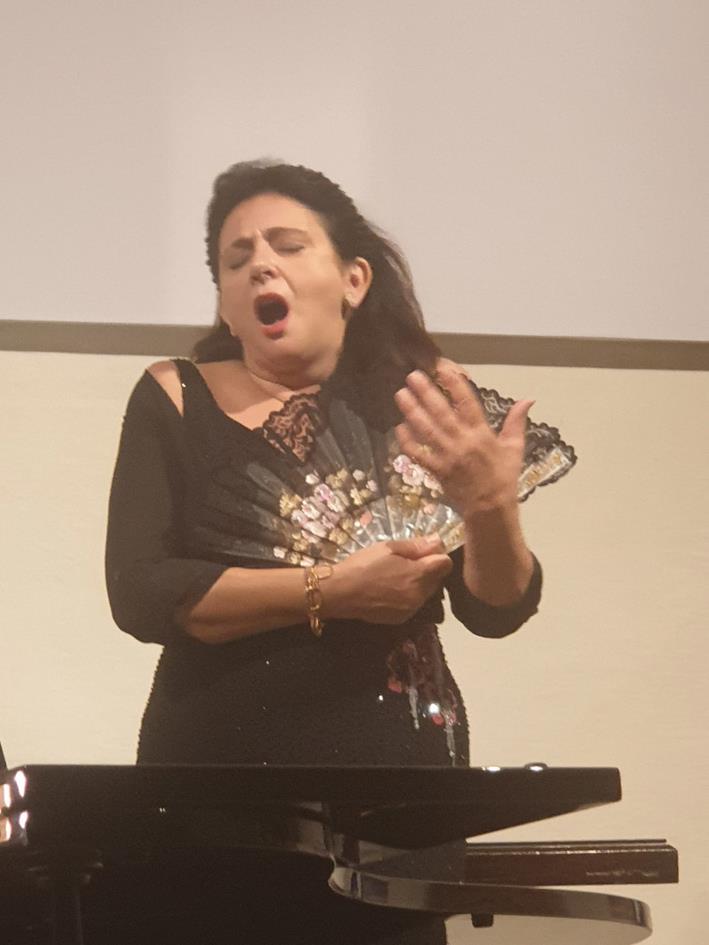I am almost tempted to say that there is simply too much going on when it comes to culture on these islands. Gozo is rapidly catching up and some of the more desirable events are happening there.
This week I enjoyed three events, among them a concert at the Istituto Italiano di Cultura, courtesy of His Excellency the Italian Ambassador to Malta, Fabrizio Romano. The concert was organised by the Associazione Mozart Italia Malta which aims to promote the music of Mozart and beyond, with particular attention to the training of new generations of musicians.

I had enjoyed another concert by this energetic young group which is led by Debora Comper. This was an evening at St Patrick's School where the actors wore Mozartian costumes, including wigs.
Here's a potted history of the Istituto building, on St George's square, which was built in 1602 by Grand Master Alof de Wignacourt, and originally used as an armoury. The mural plaque at the entrance to the building recalls the work undertaken by Grand Master Wignacourt in finding a place for the Order's arms and official records.

The building was subsequently adapted during the Chancellorship of Manoel de Vilhena who later became Grand Master. The main Hall bears his coat of arms as well as that of another Grand Master, the Portuguese Pinto.
The ceiling's frescoes are the work of Nicolò Nasoni, a painter from Siena, who stayed in Malta from 1723 to 1725. Look up when you go there next.
This was to be an evening of singing and poetry. An evening of sounds and words and their hidden power. The name of the concert: Amore tra musica e poesia.

His Excellency said a few introductory words, followed by a few words from Debora. Marie Baroni, Debora's daughter compered the evening and read poems in English. The evening was well-prepared and organised. Each piece of music or song was introduced with a few words and also a short poem or part of a poem.
The stars of the evening were the soprano, Paola Francesca Natale and pianist Keith Goodman. Paola studied pianoforte and voice in a number of institutions. She has worked with many famous directors including Zeffirelli, sang with the likes of Domingo in theatres including the Fenice in Venice, and has toured in Europe, America and Japan.

Keith Goodman is an Italoamerican musician. He not only studied pianoforte but composition, conducting and so on. He has composed many pieces and held prestigious posts, travelled extensively with his music and has collaborated with Radio Vaticana on musical programmes.
Preliminaries over, let us look at the programme more closely and see what made for an enjoyable evening.
The pianist played Scarlatti's Sonate K.9 and K.64. Now Domenico Scarlatti (1685-1757) composed 555 keyboard sonatas.
He played with captivating simplicity. He is no showman. This was evident throughout the concert. He also played Mozart's Fantasia K. 397. This is one of Mozart's most popular compositions for piano. It is pure Mozart and the pianist shared his delight in playing it with the audience.
It is Puccini's centenary and I am always happy to see him on a programme. Piccolo Valzer. This is such a popular piece and deservedly so. It touches the heart, the very soul. The pianist gave us such a lovely interpretation of it. It was worth going to the concert just for this piece. There is nothing more for me to add.
We all love the Intermezzo from Manon Lescaut but rarely hear it played on the piano. Manon established Puccini's reputation and was highly acclaimed by the critics and public alike. Although I enjoyed the new experience (to me) of a Puccini intermezzo on the piano however, music which is originally intended for an orchestra does not have the same impact on a single instrument.
This was followed by a Minuetto by Pilati. The pianist gave us his own composition Minuetto op. 58 which fitted seamlessly into the programme.
In between each piece of music Maria Baroni read poetry in English.
"To part is to die a little
To die, to what we love..."
This is a translation of the famous and moving French poem Chanson de l'adieu by Edmond Harquecourt.
Now let's see what the soprano, Paola Francesca Natale sang that evening.
An aria from Rossini's Francesca da Rimini. She was caught in flagrante with her husband's brother and he killed them both...back in 1283 or thereabouts, for goodness sake. Dante knew her and she appears as a character in Dante's Inferno. She is the first soul to be damned in Hell.
Soprano Paola Francesca Natale sings with passion and puts her own stamp on each aria or canzone. She gave us Tosti's Chanson d'amour. So moving. Maria Baroni had read some verses from the poem in English now we heard the original version in French.
A gentle aria by Puccini, Sogno d'or, sole e amore after which she gave us Paul Abraham's Toujours l'amour from the jazz operetta, Ball at the Savoy. It premiered in 1932 to popular and critical acclaim in a theatre in Berlin but Hitler became Chancellor a few weeks later and since composer and librettists were Jewish the show was forced to close down but opened a few months later in Prague. Toujours l'amour is one of the notable arias of this operetta. The soprano came out with a fan and showed us her acting skills as well as her vocal ones. Most enjoyable.
The last song was Kurt Weill's Je ne t'aime pas. Weill is best known for his The Threepenny opera which included the popular ballad Mack the Knife. This was another great interpretation by the soprano. She did not mince her words. 'Non je ne t'aime pas'! I wonder which poor fellow inspired this song.
The musicians gave us an encore after an hour of performance which must be so tiring. And it was Passione, a standard piece in the repertoire of tenors. Both pianist and soprano gave us their all, the pianist's first bars were full of energy. It is a canzone I can listen to time and again.
This was a most enjoyable evening in every way. A balanced programme put together for our enjoyment and our delight. It was worth going into Valletta for it. It isn't always. Indeed a happy idea.
[email protected]
Photos: Courtesy of Albert Storace and Debora Comper